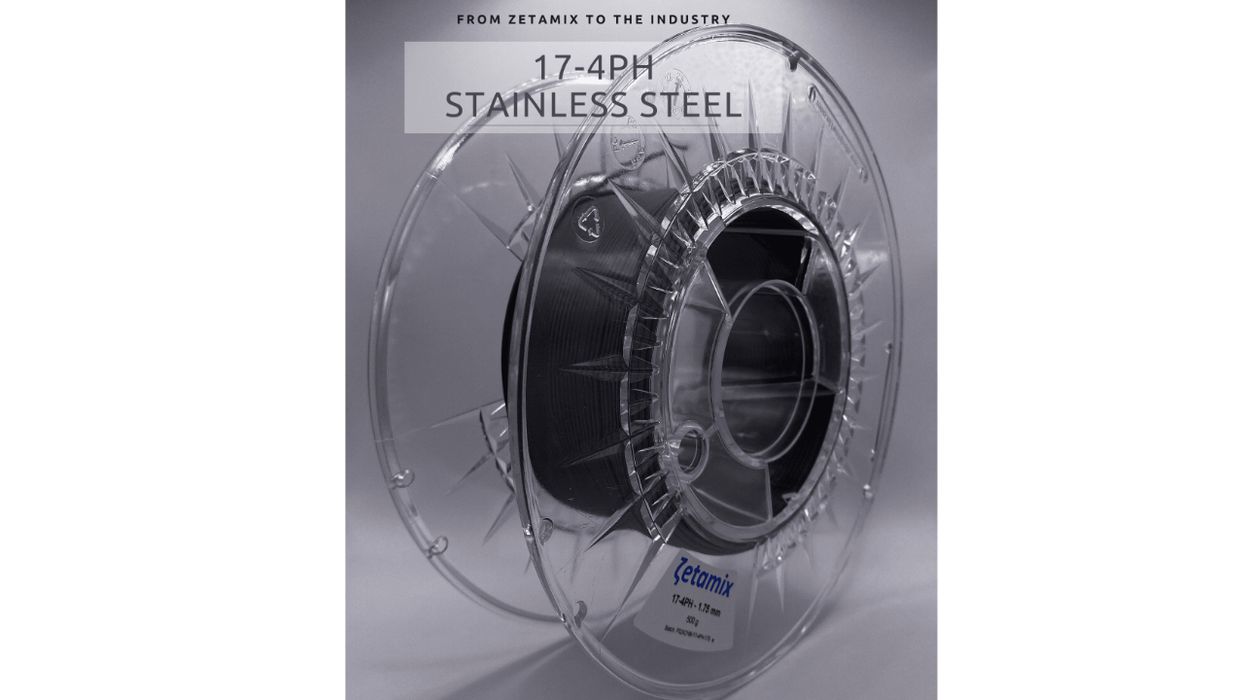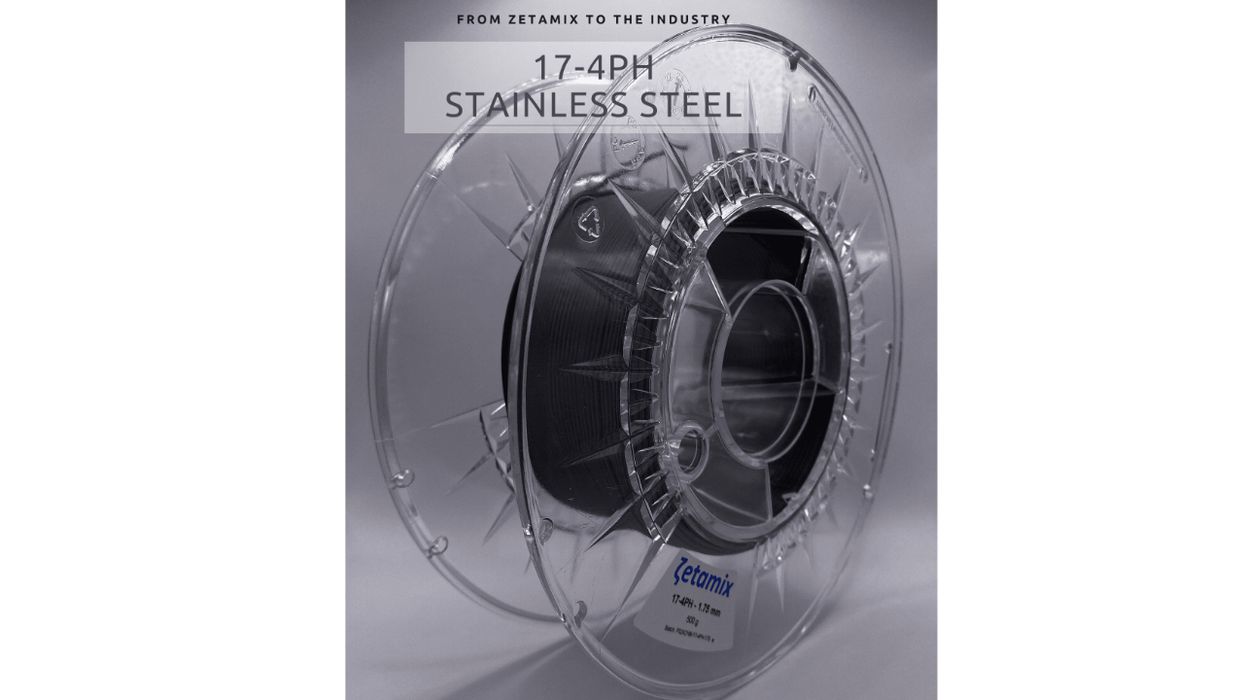
Zetamix introduced a new metal filament for FFF devices, 17-4PH.
You might be wondering how you can 3D print metal using the FFF process, as it is normally used for polymer printing. It was discovered some years ago that it’s possible to mix a polymer binder with metal powder to create a “metal filament” that can be printed.
The polymer guides the metal particles through the filament path, right up until deposition. These metal prints take place using the exact same process as polymer FFF prints, but an abrasive-resistant hot end must be used.
The secret is in the post processing. By taking the print through a specific set of thermal or chemical treatments it’s possible to evaporate the polymer and sinter the metal particles together. It’s very possible to make metal objects in this way, as long as you have a metal filament, FFF 3D printer and programmable sintering oven. The only drawback is that the prints will shrink about 20% when the polymer is removed. However, it’s easy to compensate for that by simply printing objects correspondingly larger.
Zetamix has produced a 316L stainless steel filament previously, but now they’re introducing a 17-4PH filament.
17-4PH is a different variation of stainless steel that is harder than 316L, but has less corrosion resistance. This means parts made from 17-4PH can be lighter, so long as they aren’t exposed to corrosive environments. Zetamix explains:
“Our 316L stainless steel filament has been a popular choice, offering excellent corrosion resistance and good overall performance. On the other hand, the new 17-4PH filament brings several advantages: enhanced toughness, superior mechanical properties, and increased strength. This makes it perfectly suitable for industries such as maritime, defense, gas and oil, and tool-making, where high performance and reliability are essential.”
This material has some interesting print properties that are quite different from typical FFF 3D print materials. For example, the recommended print speed is turtle-level 20mm/s, and the recommended hot end temperature is only 120-130C.
The material is 92% steel by weight, but only 60% by volume. This shows the high density of steel as compared to the polymer binder. After sintering, the part will have shrunk by 14-16%. The resulting part will be more than 90% steel.
For this material the debinding process to remove the polymer is done with an acetone treatment, whereas some other materials this can be done with thermal treatments. The sintering process requires a gradual heat-up to a scorching 1350C.
If you’re considering experimenting with this hard stainless steel material, be aware that it is pricey. A spool is sold by Zetamix for €249 (US$374). The weight of the spool is unfortunately not listed by Zetamix, but I’d bet it is 500g, the typical size for metal filament spools.
Via Zetamix

